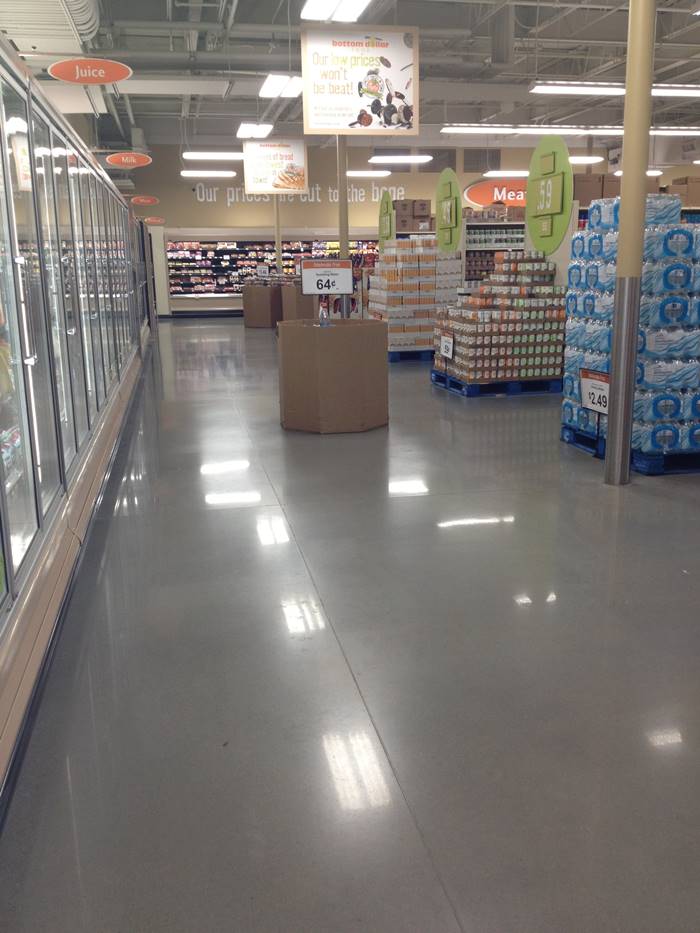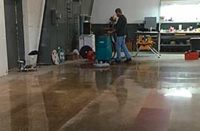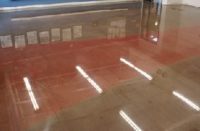
Densifiers and hardeners for polished concrete are either alkali metal silicates or colloidal silica.
When you apply the densifier of choice to concrete and it absorbs into the polished concrete slab, the silicate reacts with the free lime (excess calcium hydroxide) and forms calcium silicate hydrate (CSH gel). This reaction mimics the hydration of portland cement, making the polished concrete both harder and denser due to a new formation of crystals.
Only penetrated and reacted densifier will be an effective protectant, so how do you know when you’re done densifying a polished concrete slab?
Signs of densified to rejection
- Densifier has been on for a minimum of 30 minutes.
You’ve reached the recommended coverage rate for the square footage of your slab. (Measure the square footage before you apply the densifier.) - Any areas that have gotten slippery have been diluted and redistributed.
- The crazing/spider/shrinkage cracks have been filled and are no longer as pronounced.
- You twist your foot on the dry densified concrete and it squeaks.
- When dry, the concrete is about the same color across the entire surface. NOTE: Lighter areas such as edges, around columns and in high spots did not receive as much densifier.
- When done densifying, you check to see how many gallons were applied, and the number is close to the specified quantity. If it isn’t, keep applying until the quantity gets closer.
One last tip
Sometimes waiting a few hours or overnight and densifying again allows the slab to simply lose water and dry out. When this happens, more densifier will penetrate and the slab will truly be densified to rejection!
A densified to rejection slab will be dustproof, abrasion resistant, wear resistant and shine retentive. It should have a finished look for years after installation.
Have more questions or a suggestion for polished concrete topics? Feel free to contact Jennifer Faller at [email protected].












